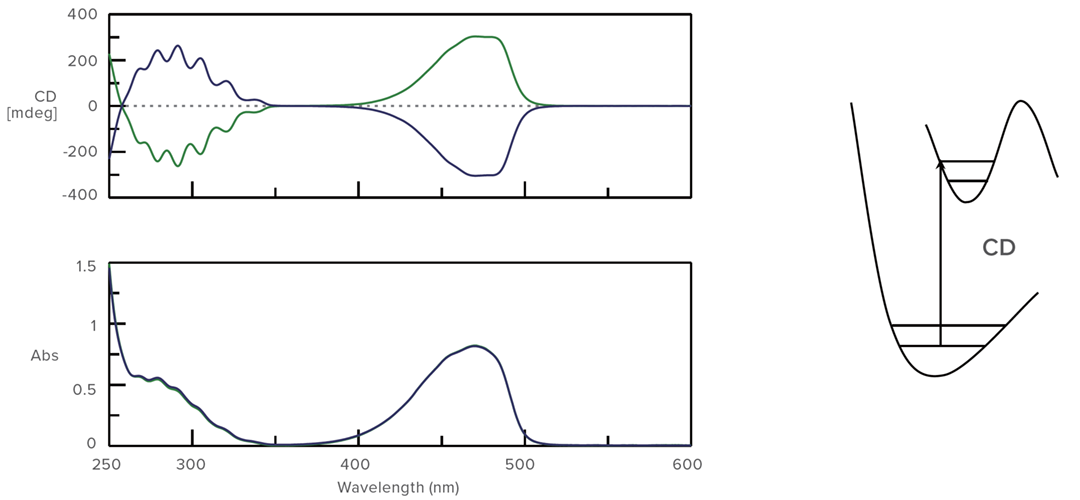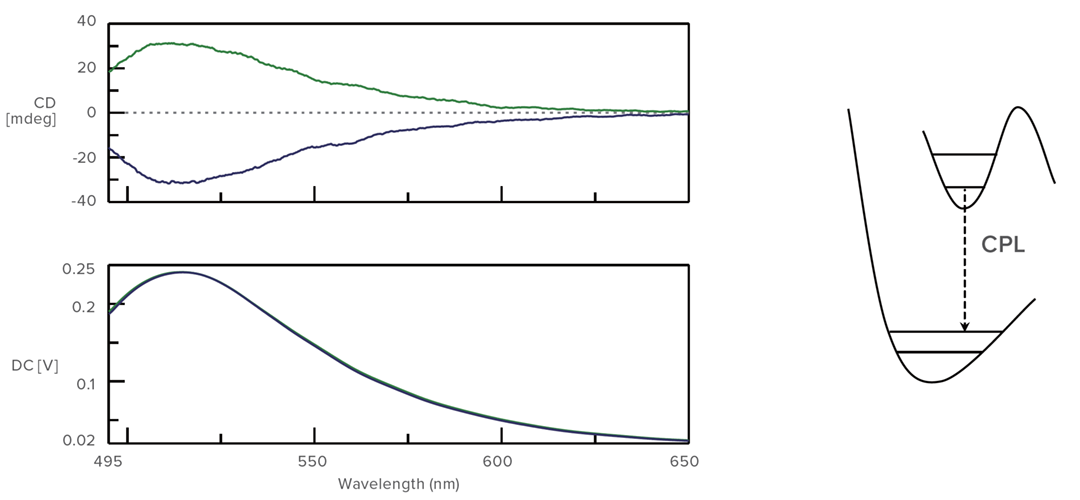Circularly polarized luminescence (CPL) offers complementary information to other chiroptical techniques such as Optical Rotatory Dispersion (ORD), Circular Dichroism (CD), Vibrational Circular Dichroism (VCD) and Raman Optical Activity (ROA). A CPL signal is the intensity difference between left and right circularly polarized light emitted by a chiral molecule which is excited with unpolarized light.

CD (top) and absorbance (bottom) spectra of camphorquinone (measured by the JASCO J-1500 CD)

CPL (top) and fluorescence (bottom) spectra of camphorquinone (measured by CPL-300)
Recently, CPL spectroscopy is employed as an analytical technique for molecules which emit circularly polarized light such as those used in 3D display manufacturing and other novel technologies. Historically, the CPL technique was used mainly with liquid samples. The new JASCO CPL-300 allows the use of not only liquid but solid sample measurements, including temperature control and magnetic field measurements.
